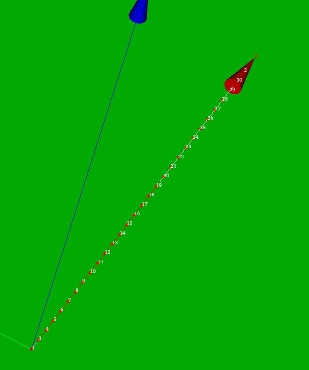Contrib:KeesWouters/beam/orientation
Contents
Define orientation of beam elements by Python list
If you are already familiar to Code Aster, enjoy this. Otherwise start with a less complicated example, eg have a look here first please.
Static displacement of a single beam on point load
november 2010 - SalomeMeca 2010 (Code Aster 10.2) - Ubuntu Meerkat 10.10 64bits.
Geometry, mesh and material properties
This is just a simple example of the use of beams for static calculations. The main focus is on varying orientation of the beam by a Python list. The orientation of the beams depend on the x coordinate of the beam element.
The cross section of the beams is a rectangle defined by HY, HZ and EP, ie the height in y and z direction and the wall thickness respectively. Length of the beam is 1.41 [m].
The boundary conditions are: fully clamped at x = 0, free at the opposite end.
The mesh consists of about thirty beam elements distributed along the x axis. This has the curious effect that the coordinates of the nodes are defined by a single coordinate. Mind that you need to adapt the code in case of two or three dimensional coordinates (see define_beam_orient).
General way to define the orientation of the beam
The geometry and mesh are generated in Salome in the standard way. In Code Aster the mesh is read, including nodes number, node coordinates, element types and element connectivity. We use linear seg2 elements for the beams.
Of each element we can
- determine the nodes by the connectivity matrix,
- determine the x coordinates of the nodes and
- generate the orientation of the beam
by Python commands.
